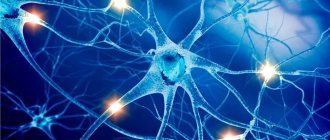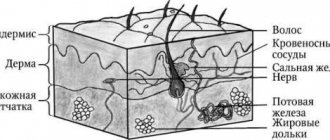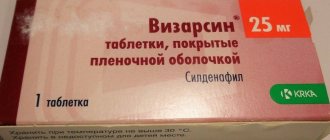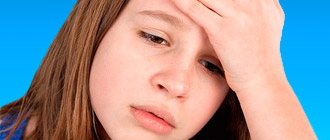What it is
These are drugs that improve performance, memory and learning ability. Piracetam was created first - it appeared in the sixties of the last century. In the seventies, scientist Corneliu Giurgia discovered that this medicine stabilizes the membranes of cells in the central nervous system, improving the functioning of brain cells. They didn’t know the exact mechanism of how piracetam works—they were just guessing. Giurja proposed using it to restore mental abilities after injuries, oxygen starvation of the brain, with senile dementia and congenital dementia in children.
Most nootropics are of animal origin. They are extracted from the brains of pigs and cattle, rich in low molecular weight proteins. The drugs are inexpensive and rarely cause side effects, which is why doctors love them.
Nootropics for children, adults and the elderly
Currently, clinical studies of nootropics are being conducted in the USA and Europe to identify therapeutic effects that can be used to treat diseases in various fields of medicine. It should be emphasized that we can talk about nootropics with proven effectiveness only in terms of the positive mechanism of their action, recorded by both researchers and doctors in clinical practice.
For example, on February 12, 2010, data from a clinical study on the use of nootropics in the treatment of CNS pathologies was published in the USA (Malykh A., Sadaie R. “Piracetam and piracetam-like drugs: from basic science to novel clinical applications to CNS disorders”). The study demonstrated the neuroprotective effect of the substance, effectiveness in the treatment of cognitive disorders of cerebrovascular and traumatic etiology, as well as associated depressive states. In particular, the study notes the effectiveness of nootropics as part of complex therapy in the treatment of epilepsy.
Similar and other positive effects of using nootropics are noted in many modern clinical studies, the results of which are published in scientific journals and are publicly available on the Internet. In other words, nootropics with proven effectiveness exist, they are presented on the pharmaceutical market, and are actively prescribed by doctors in various fields of medicine, but the final decoding of the therapeutic mechanism of drugs in this group has yet to be learned.
Nootropics for children
Nootropics are used in the treatment of various diseases associated with central nervous system pathology in children. In the first years of a child’s life, they can be prescribed for the prevention and treatment of delayed psycho-speech-motor development; at a later age - to stimulate the activity of the central nervous system systems responsible for concentration, the learning process, memory, and the ability to reproduce information.
Nootropics for children include drugs with dominant or predominant mnestic effects (“true” nootropics):
- racetams;
- cholinesterase drugs;
- neuropeptides and their analogues;
- amino acid activators;
- neuroprotectors;
- activators of brain metabolism;
- cerebral vasodilators;
- calcium antagonists;
- antioxidants;
- GABA activators.
Indications for prescribing nootropics for children are:
- delayed speech development;
- impaired mental function;
- cognitive impairment due to organic brain damage (consequences of neuroinfections, head injury, genetic pathology);
- mental retardation;
- ADHD;
- Parkinson's disease;
- neurogenic urination disorders;
- neurosis-like conditions;
- stuttering, predominantly clonic;
- asthenic and anxiety-neurotic conditions;
- epilepsy (in complex therapy).
Nootropics for adults
Biological therapy for mild, borderline and severe mental disorders may include nootropic drugs. They are prescribed for the occurrence of pathological conditions associated with cognitive functions, mood and sleep. For example, they have a positive effect on the psycho-emotional state and personal effectiveness as an addition to psychotherapeutic treatment, and accelerate the achievement of the desired result.
Nootropics for adults used in mono- and complex therapy of mental disorders:
- pyrrolidone derivatives (Nootropil - note, for example, and further);
- cyclic derivatives, GABA (Pantogam, Phenibut, Aminalon);
- acetylcholine precursors (Deanol);
- pyridoxine derivatives (Pyritinol);
- Devincan derivatives (Vincamine, Vinpocetine);
- neuropeptides (Vasopressin, Oxytocin, Thyroliberin, Cholecystokinin);
- antioxidants (Ionol, Mexidol, Tocopherol).
The above nootropics are prescribed for mental disorders arising from vascular diseases of the brain (F00-F09, “Organic, including symptomatic, mental disorders”):
- exogenous-organic mental disorders;
- transient psychotic disorders;
- persistent mental disorders;
- psychoorganic disorders;
- vascular dementia.
Nootropics for older people
Neuroprotective nootropic therapy for older people is prescribed for Alzheimer's disease, Pick's disease, as well as syndromes including confusion, instability of attention, confusion, disorientation in space and time, memory problems, fragmented thinking, emotional imbalance, fear, anxiety, motor agitation or lethargy, deceptions of perception, sleep disturbances.
Rice. 4. Structure of the nervous system
When to use them
Most often, nootropics appear in the prescriptions of neurologists. They are prescribed for everything - from neurosis and OCD, from VSD, which does not exist, and dementia. In hospitals, nootropic drugs are administered intravenously to speed up tissue recovery after a stroke or transient ischemic attack - as prescribed by clinical recommendations. But they do not recommend using some nootropics during the acute period of ischemic stroke due to possible neuronal depletion and steal syndrome. Therefore, focusing only on them is not enough.
“First, the doctor makes a generally accepted diagnosis,” says GMS Clinic neurologist Sergei Makarov. — If we are talking about vascular cognitive impairment, then first of all the risk factors are corrected: diabetes mellitus, atherosclerosis and arterial hypertension. Not all diseases require medication."
But many neurologists and psychiatrists, who are not interested in new research, prescribe nootropics to people with impaired memory, attention and learning ability, focusing only on clinical recommendations. For example, Cerebrolysin is recommended for the prevention of dementia at the initial signs of Alzheimer's disease. Also, many doctors believe that nootropics will help you stay sane and memory longer in case of chronic vascular disorders of the brain.
“When a child has a disorder of psychoneurological development, the doctor is tempted to give something to “improve brain function,” says Varvara Khaletskaya, MD, neurologist at the Fantasy children’s clinic. “After all, sometimes there is no effective method leading to a complete recovery. Therefore, the doctor and the parent are trying to invest bit by bit: pedagogical correction, physiotherapy and medications.
It’s another matter when there is an effective treatment protocol, but the doctor continues to treat in his own way. It turns out ugly: instead of pedagogical correction, a child with psycho-speech disorders is given nootropic drugs, and they are advised to “wait” with classes. Or in the case of sensorineural hearing impairment, for which hearing aids are possible, they are referred to a neurologist to “feed” the auditory nerve. In this case, time is simply wasted. Before prescribing a treatment with insufficient evidence base, the doctor should make sure that there is a more effective solution.”
Range
Most nootropic drugs are available with a prescription. However, some drugs from the list of nootropics are available without a prescription. Depending on the chemical structure and properties, the following groups of OTC drugs are distinguished:
Table 1. Groups of drugs with nootropic activity (drugs approved for over-the-counter release are indicated)
| Group of drugs | INN | Trade name |
| Pyridoxine derivatives | Pyridoxine + threonine | Biotredin |
| Cerebrovascular agents | Ginkgo biloba leaf extract (registered as an angioprotective agent) | Ginkum, Ginkgo biloba, Bilobil, Tanakan, Ginos |
| Amino acids and substances affecting the excitatory amino acid system | Glycine (registered as a metabolic agent) | Glycine Canon, Glycine Ozone, Glycine forte Pharmaplant, Glycine forte, Glycine, Glycine-bio Pharmaplant, Glycine-bio, Glycine-MHFP |
| N-phenylacetyl-L-propylglycine ethyl ester | Noopept | |
| Threonine+pyridoxine | Biotredin | |
| Substances of other pharmacological groups with nootropic effects | ||
| General tonics and adaptogens | Ginseng real roots extract | Herbion ginseng |
| Melatonin | Kakspal Neo, Melaxen balance, Melarena, Melarithm, Melatonin-SZ, Sonnovan | |
| Other drugs | Glutamic acid, | Glutamic acid, |
| Levocarnitine (registered as a metabolic agent) | L-Carnitine Rompharm, Elcar, Levocarnil, Nephrocarnit, Carnitene | |
In addition, there are combination drugs that include nootropics from different groups or nootropics in combination with drugs from other categories.
Table 2. Combined drugs containing components with nootropic activity (drugs approved for over-the-counter release are indicated)
| Combination type | Compound | Tradename |
| Combinations of nootropic drugs with drugs from other groups | Glycine + glutamic acid + cystine (antioxidant) | Eltacin |
| Ginkgo biloba leaves extract + heptaminol + troxerutin (angioprotective agent) | Ginkor fort |
Let's talk about the action of these nootropics (brief descriptions are given in Table 3).
Do they have any effect?
Until the 2000s, the actual mechanism of action and effectiveness of nootropics was not particularly studied. Doctors prescribed them, and people drank them. There was a myth circulating among medical students that a month-long course of nootropics before exams improves memorization of the material, and to be sure, you need to inject it into a muscle or vein.
Now the proof of the drug’s effectiveness is not the doctor’s word, but research data. There must be at least three thousand participants, and they must be divided into at least two groups, one of which is a control group with a placebo. At the same time, neither the doctor nor the patient knows what each of the subjects is drinking - medicine or a “dummy”.
Nootropic drugs have been little studied, and studies of their effectiveness are inadequate. Either there are too few people, or the criteria are unclear. For example, they estimate the number of test points only after treatment - they apparently forgot before treatment. The American FDA, in principle, does not consider nootropics to be drugs - in the USA they are sold as dietary supplements.
“Everyone knows that nootropics are drugs without proven effectiveness. But they continue to be used, says Varvara Khaletskaya. — There are statistics, there are international protocols that help the doctor. But at the same time, each doctor’s personal experience remains with a wide range: from “they are useless” to “they are effective in many patients.”
The fact is that there is a rare exception: piracetam improves cognitive function in people with severe dementia, according to an assessment of 19 high-quality studies. But with a traumatic brain injury or mild dementia, piracetam will no longer help. Moreover, it is useless for healthy people who want to follow the path of Eddie Morra from the film “Dark Areas” and become a megabrain. Therefore, if biohacking experiments with Mexidol seem to be effective, it is only due to self-persuasion.
Mechanism of action of nootropic drugs
The mechanism of action of nootropics has not been fully studied to date. However, the principle underlying the therapeutic effect, repeatedly confirmed in vivo, is still of interest to researchers in the fields of biochemistry, cytology and pharmacology. In particular, researchers know that the effectiveness of nootropics in clinical medicine is associated with several mechanisms observed at the cellular level in the central nervous system:
- enhance the synthesis of ATP and its derivatives;
- enhance the process of synaptic transmission in the central nervous system;
- enhance the plastic process in the central nervous system by increasing the synthesis of RNA and proteins;
- enhance the process of glucose utilization;
- have a membrane-stabilizing and antioxidant effect.
Thus, the mechanism of action of nootropic drugs is associated with the restoration of metabolic and bioenergetic processes in the brain, which affect a person’s mood, performance and well-being. A correctly selected nootropic will have the effects necessary for treatment, which manifest themselves over a long period of time, provided that the recommendations of the attending physician are followed (for example, regarding a rational and healthy lifestyle, attending psychotherapy sessions, taking first-line medications).
Rice. 1. Neuron
List of nootropic drugs
Nootropic drugs for the brain can be found in the international Anatomical-Therapeutic-Chemical Classification of Medicines. The list of nootropics in the subsection “Other psychostimulants and nootropic drugs” (N06BX), which is included in the section “Psychostimulants, drugs used for attention deficit hyperactivity disorder, and nootropic drugs” (N06B), contains:
- Meclofenoxate;
- Pyritinol;
- Piracetam;
- Deanol;
- Fipexide;
- Citicoline;
- Oxiracetam;
- Pirisudanol;
- Linopyrdine;
- Nisophenone;
- Aniracetam;
- Acetylcarnitine;
- Idebenone;
- Prolintane;
- Pipradrol;
- Pramiracetam;
- Adrafinil;
- Vinpocetine;
- Mebicar;
- Phenibut.
The list of nootropics does not end with the names above. On the domestic pharmaceutical markets there are other derivatives, synthetic analogues and drugs that have the properties of nootropics, but are not such. It should be noted that recently there has been a fashion for precisely these “latest generation nootropics” - dietary supplements that can be purchased without a prescription. As a rule, they are complexes of vitamins and substances of plant origin.
In the strict sense of the word, it is not possible to talk about the latest generation of nootropics. It should be understood here that the first nootropic, by definition, was piracetam. Racetams, which have variations in formula and therapeutic effect, and drugs with nootropic properties are still being developed by pharmaceutical companies. Some of them are prohibited in the United States and, in particular, are classified as new psychoactive substances (NPS) in several European countries.
List of used literature
1. Klitochenko G.V., Malyuzhinskaya N.V. "The use of nootropic drugs in pediatrics."
2. Pichikov A.A., Popov Yu.V. "Anorexia nervosa in adolescent girls: course options, relapse factors and suicidal risk in the early stages of treatment."
3. Davydova O.N., Boldyrev A.A. "Glutamate receptors in cells of the nervous and immune systems."
4. Vostrikov V.V. "The place of piracetam in modern practical medicine."
5. Shabalov N.P., Skoromets A.A., Shumilina A.P. “Nootropic and neuroprotective drugs in pediatric neurological practice.”
6. Malykh A., Sadaie R. “Piracetam and piracetam-like drugs: from basic science to novel clinical applications to CNS disorders.”
7. Calliauw L., Marchau M. “Clinical trial of piracetam in disorders of consciousness due to head injury.”
8. Rybak V.A., Matokhina N.V. “Nootropic drugs in the clinical practice of a neurologist.”
Share
Share









